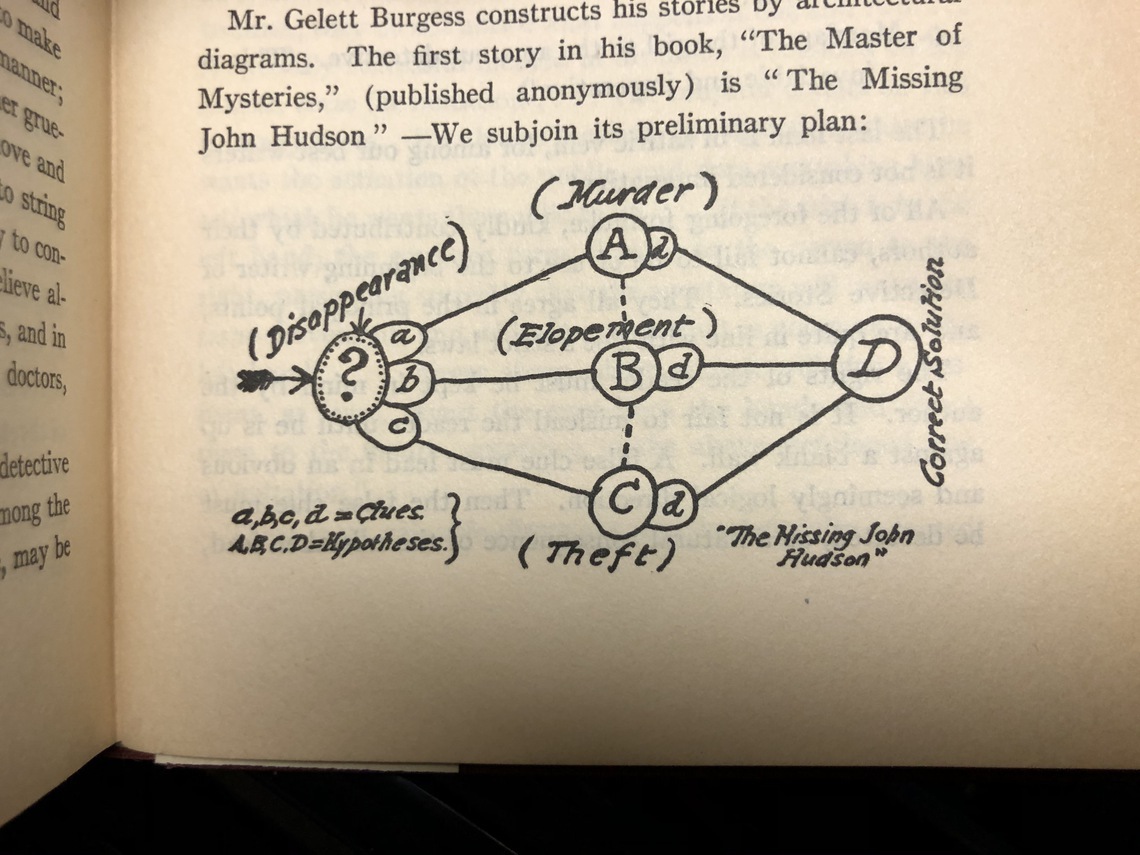Technique of the Mystery Story
-
A prolific writer of detective stories, Carolyn Wells penned one long-running series, the Fleming Stone Detective Stories, that alone contained 61 titles. In 1913, Wells authored a volume that purported to reveal the secrets of her productivity. Technique of the Mystery Story was a writing manual that also analyzed the specific elements of the genre of the mystery novel. She offered detailed classifications of mystery subgenres, listed tropes and devices, and dissected common plot structures. Mystery plots, Wells argued, need to be precisely crafted to build toward a satisfying resolution. Authors therefore need to meticulously plan the crime at the center of each book, along with the method and motive, to be able to chart an elaborate social network around the victim that will both obscure the perpetrator and, ultimately, provide a satisfactory feeling of closure to the reader. Diagrams were essential tools for organizing such complex plots, Wells argued, and included the “architectural diagram” of fellow writer Gelett Burgess to show how clues and hypotheses should be mapped around a missing character. The web’s structure should only slowly be revealed so as to show how interconnections lead to the mystery’s solution.
Introduction
- Label
- Technique of the Mystery Story
- Author
- Carolyn Wells
- Original Publication Date
- 1913
- New Publication Date
- 1929
- Publisher
- Home Correspondence School
- Location
- RBML
- Case
- 5
